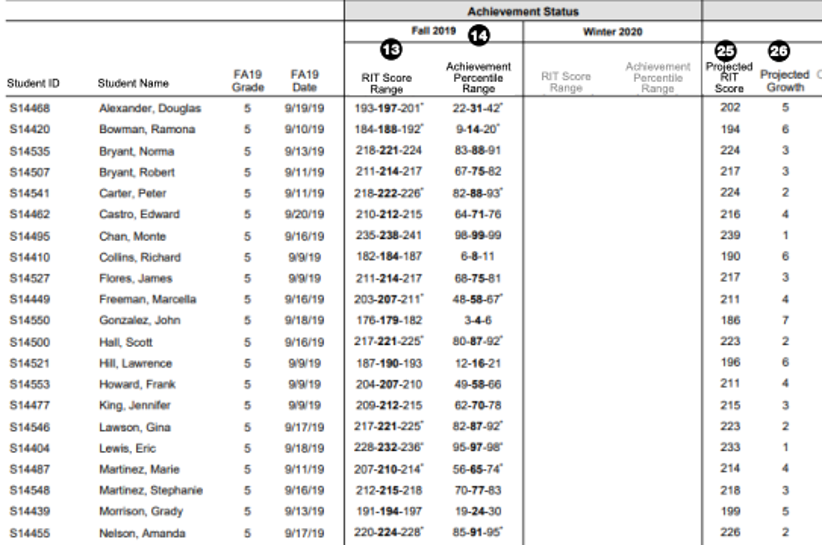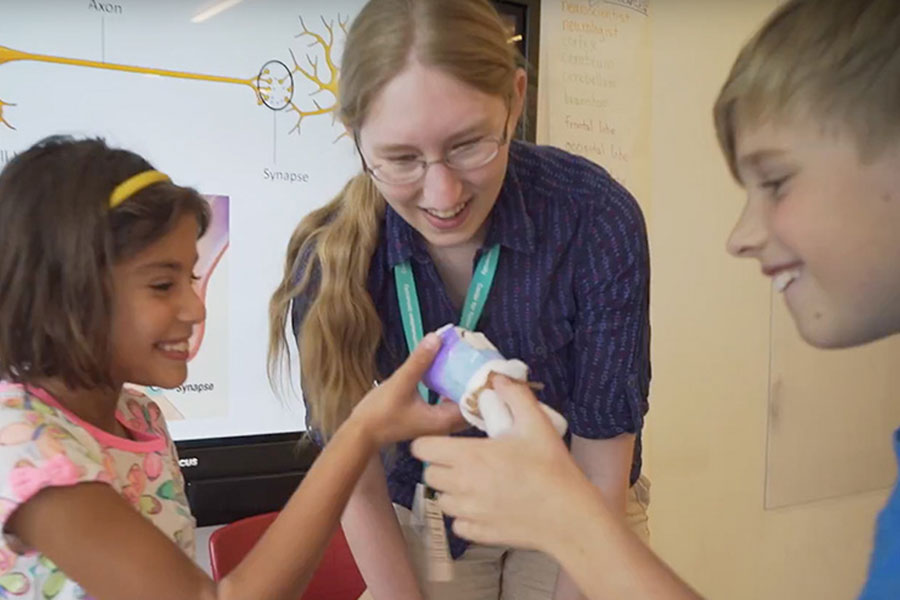Considering Growth for Advanced Learners
Since the adoption of the Every Student Succeeds Act (ESSA), states and school districts have worked to design accountability systems that measure both student achievement and growth. What’s the difference?
 Student achievement assessments measure what a student knows or is ready to learn related to content standards (knowledge and skills in various subjects). Many assessments also have normative distributions based on research. Norms are created to compare scores across groups of students and allow educators to better understand the context of achievement as it relates to other students and content standards. Growth is the difference between data point A (e.g., a test result from the beginning of the school year) and B (e.g., a test result from the end of the school year). This informs how much movement, or learning, has happened between two points in time. While this may sound straightforward enough, there is a third variable that must also be considered: expectations. States have adopted minimum expectations for proficiency, or mastery of content standards at each grade level. Most states begin to measure this in third grade. The challenge is combining these data sets to understand the effect of programs and instruction on student performance.
Student achievement assessments measure what a student knows or is ready to learn related to content standards (knowledge and skills in various subjects). Many assessments also have normative distributions based on research. Norms are created to compare scores across groups of students and allow educators to better understand the context of achievement as it relates to other students and content standards. Growth is the difference between data point A (e.g., a test result from the beginning of the school year) and B (e.g., a test result from the end of the school year). This informs how much movement, or learning, has happened between two points in time. While this may sound straightforward enough, there is a third variable that must also be considered: expectations. States have adopted minimum expectations for proficiency, or mastery of content standards at each grade level. Most states begin to measure this in third grade. The challenge is combining these data sets to understand the effect of programs and instruction on student performance.
Schools and districts look at achievement, growth, and proficiency for all students, but here the focus is on growth as it relates to advanced or high-achieving learners. There are some important issues to keep in mind if parents and educators are going to be able to assess accurately how their students are growing and what they need to reach full potential.
The term advanced learner can have many varied meanings. Here, we will define this as a student who is performing in the top 10-15% for achievement when compared to same aged peers and/or grade level content. Why is it important to investigate growth specifically for this group of students? Often, there is an assumption made that if a student is achieving well on assessments, making “good” grades, and not struggling in school, they are fine. These students are demonstrating success, right? But what about how much they have learned in a given timeframe (growth)?
Let’s start with the premise that all students have the ability to grow at similar rates regardless of their achievement status. This idea may seem basic, however, growth norm studies from assessment companies suggest that average growth goes down as achievement goes up. NWEA, who owns Measures of Academic Progress, or MAP, has robust norms that describe average achievement and growth for students. When we compare two learners in the same grade cohort, with different achievement profiles, we see average growth, or projected growth, is lower for the higher achiever in this example.

(NWEA, MAP Growth Reports Portfolio, 2022)
NWEA does not suggest these projections are a prescription for growth (how students will grow), but a description of what exists in our nation based on student performance over time. So, why do more advanced learners grow less, on average, than their same-aged peers? Some believe that it is because advanced learners are already high-achieving and therefore do not have as much progress to make. This may seem true given the constructs of school systems and standards alignment focusing on grade-level proficiency. Many students who are achieving in average or below average ranges do have growth to make at “grade level”. The reality for many advanced learners, is that grade level content is redundant. Often, many have already moved towards mastery, before entering a grade level. But this says nothing about a student’s capacity to learn.
Regardless of age or achievement profile, why should grade-level standards become a ceiling for learning at any age? College and Career Readiness standards build over time. After third grade standards there are fourth grade standards. After tenth grade there are eleventh grade standards. At the end of College and Career Readiness standards, there’s college. There is no real ceiling on learning. Why then should schools limit growth expectations for the most advanced learners?
Advanced students have as much potential to grow as other students, so why does data tell a different story? Chances are, limitations of the assessment tool, redundant instruction, misplacement in courses and under-programming of advanced learners are the culprits. To turn the tide on this phenomenon, we need to shift the focus of measurement for these learners to mastery of standards outside of their grade level, using above-grade-level assessment and specific pre-assessment to measure readiness for instruction that looks beyond the grade level content.
The Zone of Proximal Development or ZPD, defined by psychologist Lev Vygotsky, is the difference between a child's “actual developmental level as determined by independent problem solving” and the child's “potential development as determined through problem solving under adult guidance or in collaboration with more capable peers” (Vygotsky, 1978). Educators want to ensure that student learning opportunities align with a student’s ZPD. If an advanced learner has a ZPD that is not aligned to current grade-level standards, it requires responsive planning, differentiation, or alternative placement to meet learning needs and stimulate growth. Strategies such as learning extensions, curriculum compacting, telescoping, and other forms of enrichment and acceleration are appropriate for advanced learners in order to “right-size” their instruction.
While we as educators celebrate any student growth, context is important. Are your students growing at an appropriate rate based on their ability? Are they getting the maximum impact of their instruction? If the answer is “no” or “I don’t know”, it warrants investigation of the data and learning environment.
Melissa Hinshaw is the Assessment Coordinator at Northwestern University’s Center for Talent Development. If you would like to discuss above-grade-level assessment or set up a consultation (parents or educators), please email ctd-assessment@northwestern.edu.
Vygotsky, L. S. (1978). Mind in society: The development of higher psychological processes. Cambridge, MA: Harvard University Press.

